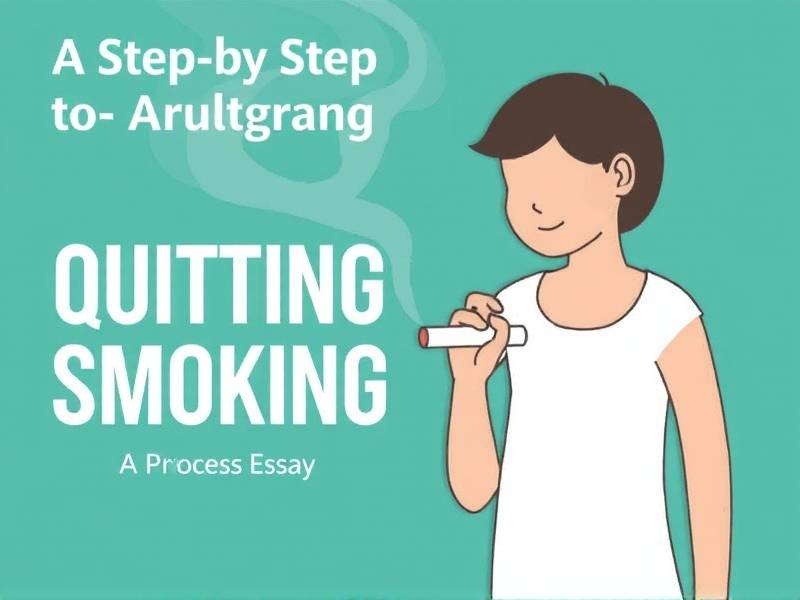A Step-by-Step Guide to Quitting Smoking: A Process Essay
Introduction
The journey to quit smoking can be daunting, but with the right approach and a clear plan, it's possible to break the habit for good. This guide will take you through a step-by-step process, offering practical advice and insights to help you on your smoke-free journey.
Understanding the Habit
The Science Behind Smoking
Before diving into the quitting process, it's essential to understand why smoking is so hard to quit. Nicotine, the primary addictive substance in cigarettes, affects the brain's reward system, leading to cravings and withdrawal symptoms.
Recognizing Your Triggers
Identifying your smoking triggers is crucial. These could be social situations, stress, or even specific times of day. By recognizing these triggers, you can prepare strategies to cope with them effectively.

Preparing for Quit Day
Setting a Quit Date
Choose a date that feels manageable and commit to it. It could be in a week or a month; just ensure you have enough time to prepare mentally and physically.
Gathering Resources
Stock up on nicotine replacement therapy (NRT) products such as gum or patches. Additionally, consider seeking support from friends, family, or professional organizations.

The First Week: Navigating Withdrawal Symptoms
Dealing with Cravings
Cravings are a normal part of quitting smoking. To manage them:
- Distract Yourself: Engage in activities that divert your attention away from cravings.
- Deep Breathing: Practice deep breathing exercises to calm your mind.
- Stay Hydrated: Drink plenty of water throughout the day.
Coping with Withdrawal Symptoms
Withdrawal symptoms may include irritability, anxiety, and headaches. Here's how to cope:
- Stay Active: Regular exercise can help alleviate withdrawal symptoms.
- Maintain a Healthy Diet: Eating well can boost your mood and energy levels.
- Seek Support: Reach out to friends or support groups for emotional support.
Building Resilience: Weeks 2-4
Establishing New Habits
Replace smoking habits with healthier alternatives:
- Find Substitutes: Try alternative activities like meditation or yoga.
- Create Routines: Establish new daily routines that don't involve smoking.
Managing Stress
Stress is a common trigger for relapse. Find healthy ways to manage stress:
- Practice Mindfulness: Mindfulness meditation can help reduce stress levels.
- Seek Professional Help: Consider therapy or counseling if stress becomes overwhelming.
Maintaining Long-Term Success
Celebrating Milestones
Celebrate every milestone you achieve on your smoke-free journey. Whether it's one week or one year smoke-free, acknowledge your progress.
Staying Committed
Quitting smoking is an ongoing commitment. Stay vigilant about avoiding triggers and maintaining healthy habits.
Conclusion
Quitting smoking is challenging but achievable with determination and the right strategies. By following this step-by-step guide and staying committed to your goals, you can embark on a smoke-free life that benefits both your health and well-being. Remember that success lies in taking one step at a time—start today!
